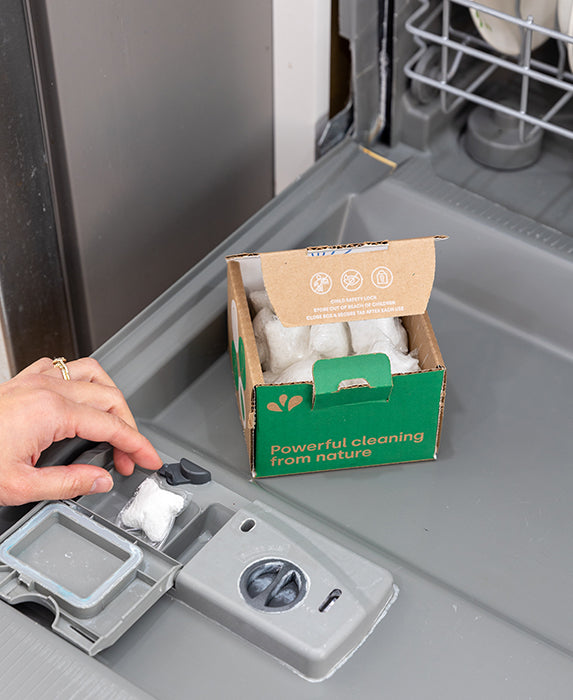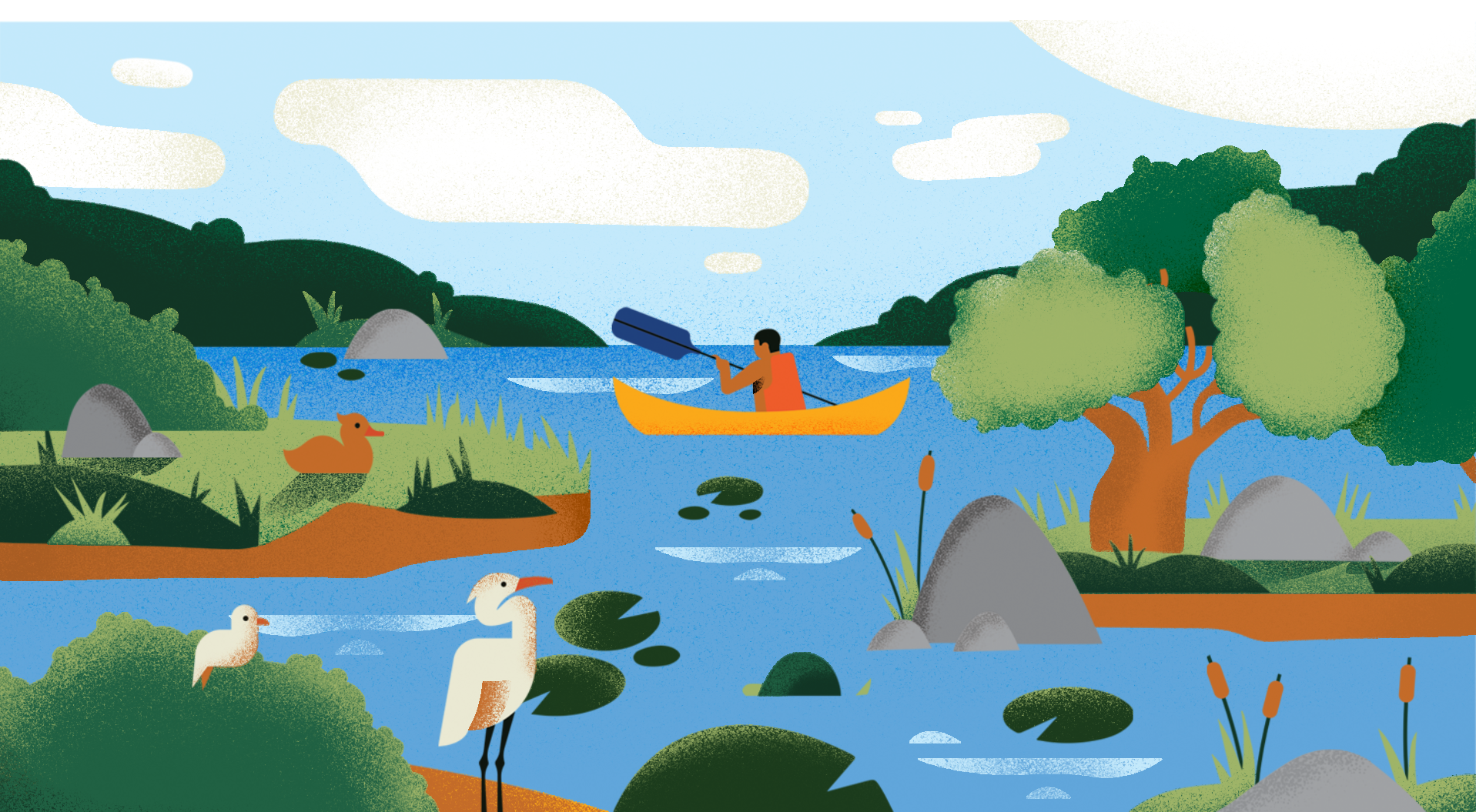What is Earth Day?
Besides being our favorite day all year, Earth Day is a global holiday that celebrates one very important thing: our planet. It also marks the birth of the modern environmental movement back in the 1970s – a time where environmentalists were labeled “tree huggers” or “hippies”, and the concept of sustainability was all but drowned out by the desire for economic growth.
Although most of America (and the world for that matter) was not tuned into the changing needs of our planet, environmentalists like Rachel Carson began to set the stage for the modern sustainability movement we recognize today. Her New York Times Bestseller Book, Silent Spring, was released in 1962 and wrote on the negative impacts of chemical insecticides on animals, habitats, and humans as a whole. Although it focused specifically on the chemical pesticide DDT and bird habitats, it began to raise public awareness around all types of pollution – and the way we treat our planet as a whole.
Earth Day
Silent Spring, in addition to major environmental crisis like the 1969 oil spill in California, inspired then U.S. Senator Gaylord Nelson (with the help of his friends!) to create an event that celebrates the grassroots enthusiasm for the planet he was witnessing, and fuses that enthusiasm with national policy initiatives. After a year of planning, on April 22, 1970, Earth Day took the world by storm as 20 million Americans hit the streets and public parks to rally for what they believed in. Various groups from all walks of life came together to rally against oil spills, polluting factories and power plants, toxic dumps, pesticides, freeways, and the extinction of wildlife and biodiversity – and left the first Earth Day with a much larger community they realized they shared values with. And so the modern environmental movement was born!
By the end of 1970, the enthusiasm around Earth Day led to the creation of the United States Environmental Protection Agency (EPA) and the Clean Water, Clean Air, and Endangered Species Acts. Woohoo! Simply because of passionate grassroots activists some major environmental policies were enacted that we still have in place today. But the power of Earth Day didn’t stop there.
Earth Day goes Worldwide!
Flash forward to 1990. A group of prominent leaders in environmental advocacy wanted another big push around Earth Day to rally not just America, but the entire world! They called on Denis Hayes, co-coordinator for the first Earth Day, to serve as international chairman and spread Earth Day with everyone. With his help, they mobilized 200 million people (mostly grassroots activists!) in 141 countries and focused on important issues like recycling and the 1992 United Nations Earth Summit. This was a hugely successful campaign, and by 2000, they knew that Earth Day was a rapidly growing global force that had the ability to create real change.
In 2000, Hayes wanted to combine the excitement and passion he saw around the first Earth Day back in 1970, with the hands-on activism and involvement from the 1990 Earth Day. The campaign focused specifically on global warming and clean energy, sending a clear message that citizens across the planet wanted meaningful action from their leaders on these issues. About 5,000 environmental groups across 184 countries teamed up with millions of activists (both online and in person!) to rally for this cause. Hundreds of thousands of activists collected on the National Mall in Washington D.C. for a First Amendment Rally. A drum chain traveled from village to village in Gabon, Africa, to celebrate. The message from the entire world was clear that Earth Day: we need to protect our planet, and politicians better step up to help us.
Earth Day Information
By 2010, Earth Day was a well-known holiday…. But the environmental issues that faced us were becoming more severe than ever. Issues like climate change (and climate change deniers), oil lobbyists, an under-educated public, and a large political divide preventing change all inspired the Earth Day Network to remind the world what Earth Day is – and why it matters more than ever. They brought 250,000 people to the National Mall in D.C. for a climate rally, and launched the world’s biggest environmental service project, A Billion Acts of Green. That inspired The Canopy Project, a global tree planting initiative that engaged 75,000 partners in 192 countries back in 2010, and has continued to make a significant impact on our global forests sense.
Today, Earth Day is considered the largest non-religious holiday observed worldwide, and is celebrated by over a billion people every year! From people choosing to celebrate the day enjoying nature with friends and family, to others who opt for a good ole’ fashioned peaceful protest, there are tons of ways to make an impact this holiday. Checkout some of our favorite Earth Day facts and initiatives below!
Earth Day Facts
- This Earth Day (2019) is the 49th annual Earth Day! The 50th Anniversary of this holiday is next year (2020) and we couldn’t be more excited!
- Earth Day was chosen to be on April 22nd by Gaylord Nelson because it was between Spring Break and Finals Week – so that students could be as involved as possible. It’s also the global Spring Equinox!
- According to the device recycler ecoATM, 30% of those polled celebrate by planting a tree for Earth Day, and 23% clean up local areas. About 47% of those polled associate Earth Day with recycling.
-
Some environmental policy victories since the first Earth Day include:
- Creation of the Environment Protection Agency (EPA!) which regulates the environmental quality of our water, air, and lands in the United States.
- The National Environmental Policy Act: a law that requires any actions done by the U.S. Federal Government to be evaluated for their impact. That includes building roads, dams, and other infrastructure, and it’s potential impact on species habitats, water and air pollution, and more!
- Clean Water, Clean Air, and Endangered Species Acts!
- Federal Environmental Pesticide Control Act: required the study of pesticides and their impacts – plus regulation of what pesticides and chemicals can be used!
- Formation of A Billion Acts of Green, and the Canopy Project!
- And tons of education initiatives!
- Despite all the enthusiasm around Earth Day, according to Gallup Polls, 42% of Americans believe that the dangers of climate change are exaggerated, and less than half say the environment should be given priority over energy production. Yikes!
- Earth Day was officially renamed in 2009 by the United Nations to be International Mother Earth Day.
- On Earth Day 2012, over 100,000 people ditched their cars and rode bikes in China to reduce CO2 emissions and fuel usage.
EarthHero’s Favorite Earth Day Products
To celebrate the “Protect Our Species” campaign in 2019, we curated a custom gift box chock full of zero-waste, plastic-free products that directly or indirectly support happy habitats, species biodiversity, and sustainable ecosystems. Our oceans are one of our largest habitats, and host millions of unique species – but can be easily impacted by mounting environmental issues like plastic pollution and climate change. This gift box brings together products like reusable straws and food storage containers that reduce the amount of plastic you produce, with innovative products like the Cora Ball microfiber catching laundry ball.
Every year, an estimated 16 billion pounds of plastic waste enters our oceans, where it damages habitats and hurts a variety of species. Our brand 4Ocean’s custom is on a mission to reduce the amount of plastic on our planet by making bracelets from recycled plastic and recycled glass – that also remove a pound of plastic from our oceans for every purchase. As of March 2023, 4Ocean bracelets have removed 28,186,511 pounds of trash from our oceans, and are just getting started! Plus, this bracelet is in support of the Earth Day Network, and donates a portion of profits to their numerous causes. Get one for yourself, and for a friend this Earth Day!
For many of us, Earth Day is an amazing reminder to get outside and enjoy nature – whether that means hiking, biking, swimming, diving, climbing… or just chilling. No matter what you decide to do, wearing an earth-friendly sunscreen is imperative to protect your skin, without harming the fragile ecosystems we love to play in. You can read more about why natural sunscreens are the way to go here.
Plastic water bottles are made of single-use chemical-laden plastic from oil, they’re mostly not recycled, and we add about 20 billion new plastic bottles to our landfills each year. Needless to say, the planet probably isn’t a huge fan of them. This Earth Day, make an effort to switch to a reusable bottle and kick single-use plastic to the curb!
Want to make an impact this Earth Day? Kate Williams, CEO of 1% for the Planet (which we’re proud to be a part of!) says that anyone can make a difference by simply incorporating little changes into your daily routine. “Read your labels, and require transparency from your favorite brands. Make a pledge to keep water clean and accessible for years to come. Commit to making an at-risk species your mascot, and become an advocate for that particular species. There are so many ways to make an impact – you just have to choose one!”, says Williams.
How will you make an impact this Earth Day? Comment below or share it with us on our Facebook or Instagram!
This blog was originally published on April 15, 2019 and was most recently updated on March 29, 2023.









